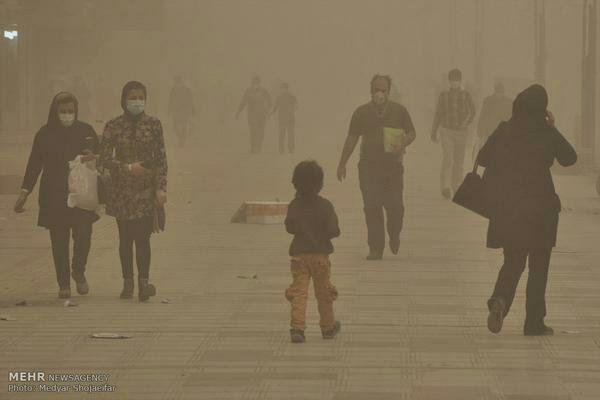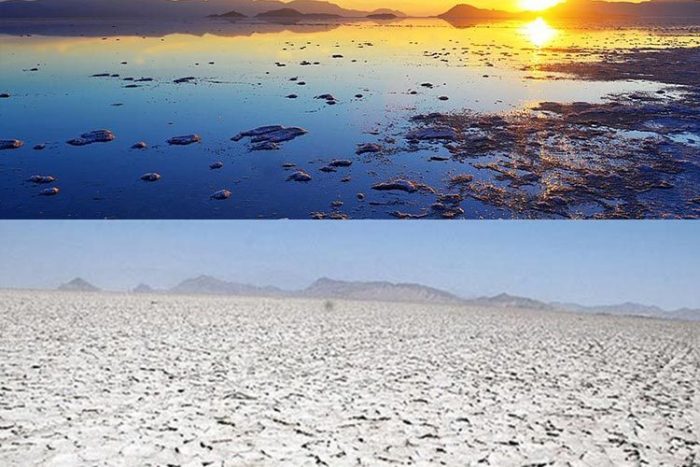
Archive Photo: Dust storms in Iran as a result of the regime’s mismanagement has become a severe environmental problem, endangering many lives.
Iran is in the midst of an environmental crisis caused by four decades of the regime’s incompetence and mismanagement of the country’s vast natural resources. Dust storms, desertification, and water scarcity have led to the spread of poverty and unemployment across Iran and caused irreversible damage to the country’s environmental and ecosystems.
The Drying of Bakhtegan Lake

Photo credit: Iran News Wire- Before and after Bakhtegan lake.
One of the many casualties of the regime’s disastrous environmental policies is the drying of Bakhtegan Lake in Fars Province, southern Iran. Once the second largest lake in Iran, Bakhtegan Lake has been completely dried due to the regime’s construction of dams on the Kor River, which fed the lake. A recent report on the Iran News Wire website described how the regime destroyed the lake and the surrounding region.
An Ecological Disaster
The drying of Bakhtegan Lake has been catastrophic to the region’s ecosystem. According to the Iran News Wire report, the lake was once home to a variety of wildlife, including flamingos and other birds. The birds, which migrated from colder regions in Russia and Siberia, were essential to the ecosystem of the region. Now that the lake is dry, they are gone.
The report wrote that the lake also played an important role in increasing the humidity level in the area. The moisture from the lake was trapped by the surrounding mountains, which helped trees in the area to flourish. Without the lake, nothing can grow in the dry climate.
Dams on the Kor River
The state-run ILNA news agency reported that Bakhtegan Lake dried out because the regime built dams on the Kor River, the lake’s source. In addition to the ecological consequences of the drying of the lake, it has also taken a human toll.
According to the Iran News Wire report, the Kor River used to feed 1.7 billion cubic meters of water into the Bakhtegan Lake each year. Then the regime’s Ministry of Energy and Fars Province’s Water Organization built dams at the source of the river.
Environmental activist Sirous Zareh told the ILNA news agency that the “Ministry of Energy has turned into a system that sells water, builds dams and sells wells.”
https://twitter.com/HeshmatAlavi/status/1006234218031181825
He added, “The Ministry of Energy has forgotten its mission of preserving water resources.”
Lack of Drinking Water
Zareh told ILNA that 150 villages in the vicinity of the Kor River have become underpopulated due to a lack of drinking water.
He said, “There was talk in summer about installing drinking water pipes from Doroodzan Dam to the Korbal region but unfortunately, the villagers have been deprived of this water and despite the fact that 90 villages are on the pipeline route, the pipeline has been diverted to be used for the industrial sector.”
The Kor River has come close to drying out due to the regime’s dam building. The farmers who used to rely on the water from the river to irrigate their crops have lost their way of life as well, as their land has dried up.
The situation along the Kor River is not unique. The regime has also built dams along the Zayanderud River, Iran’s largest river, which is upstream of Isfahan. The dams have dried up the river in Isfahan’s farming region, making it impossible for the farmers to irrigate their crops. This has affected virtually everyone in the region, as farming is the largest industry in Isfahan.
Staff Writer
